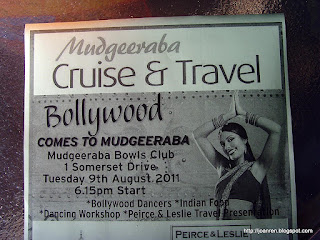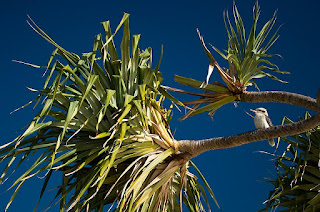Although today has been taken up with the everyday activities of home life I have just been looking back through my photographs taken over the weekend and my fascination with wildlife shows through them. Among all the scenery and sunsets there are plenty of records of the birds that have become friendly - thanks to the regular feeding of the dolphins.
Morton Island - and in particular, Tangalooma, was the site of one of the largest whaling stations in Australia. The average number of whales killed in 12 months was 600 and most of these whales were taken from the waters just in front of the resort in which we were staying. An old newsreel video recording - the sort that used to be shown before the film when us "oldies" went to the cinemas "way back when", showed how the whales actually swam and showed off around the whaling boats - just as they do for the tourist whale watch boats. The whalers would estimate the size of the whales and pick out one that was over the set limit and harpoon it with massive explosive harpoons until they killed it. The waters were red with the blood of these huge intelligent (but in those days quite stupid and unsuspecting) whales.

I took a photo of one of the harpoons - the explosive spear head has been put back on the end (less the explosive, of course!) and the plaque gives more of the gruesome story. The number of whales is climbing back up again - the wanton killing reduced their numbers almost to the point of extinction, I wonder if later, once the numbers are considered too great, that commercial hunting will recommence.
There are no larger marsupials on Morton Island and the possums and other small mammals are quite secretive and difficult to spot so I had to content myself with the local bird life!
Kookaburras hang around the resort because there is a regular feeding time for them. As long as feed is put out at the same time every day it is quite easy to coax our native birds to come close.
I never attended the Kookaburra feeding - but I enjoyed taking a few shots of these unique Ozzies in as natural a scene as possible.
Another bird that seems to love hanging around tropical resorts on island is the Curlew. These fairly large birds with long legs have a very strange call that sound a little like a baby crying. They sound very mournful at night - a little ghostly, in fact!
I tried really hard to get close to these birds but just as I thought I could take one step closer they would strut away a few more paces! They will permit you to come close - but not THAT close! At one stage I was sneaking up on seven birds at a time but once I crouched down to take my photo I would be left with just two! This one looks quite relaxed - but it was "growling" at me!
Thanks to the regular feeding of the dolphins every evening, there is a colony of cormorants that have taken residence on the small patch of beach next to the jetty (the viewing platform is along the side of the jetty). I suspect that there are fish scraps that are missed by the dolphins and these are harvested by the cormorants ("shags" is a common name given to these birds). feeding wild dolphins has become a tourist draw card in many parts of the world, Australia has some very strict regulations regarding the feeding of them (including "no touching") and yet, in spite of the restrictions, people just love the novelty of being able to hold out a titbit and have a dolphin swim right up to them and take it from their hands. In this photo, one of the resort staff is giving a snack to one of the dolphins - its a bit like saying, "here's one for now, the next you will have to earn".

The dolphin picture was taken at night with out the use of a flash, the jetty lights gave out a barely adequate illumination for taking photos - a slow shutter speed was mandatory - so the only shots that worked were the ones where the dolphin and the people were quite still.
Finally I am showing a shot of one of those black and white cormorants at work! This next picture was taken on Sunday morning. I walked onto the jetty (the same one that is used to view the dolphins) and watched the cormorants as they swam under the water and chased small fish. I didn't think that I would be able to capture this action but with digital you try anything!
The bird swims as efficiently as a fish! I was fascinated.
Now I will have to set too and put my photos together in a web album that can be shared with all my fellow travellers - and I will have to find something else to write in my blog!
AJ































